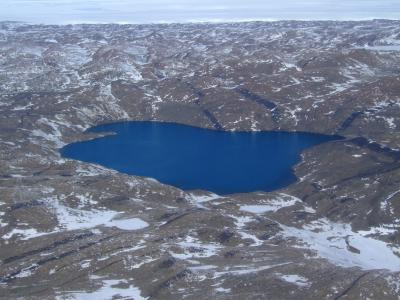Microbes In 3,500-Year-Old Lake Are ‘Promiscuous,’ Swap DNA To Survive In Antarctica’s Deep Lake

A 3,500-year-old lake, considered the world’s saltiest, may shed light on how life thrives in the extreme cold.
Deep Lake, in Antarctica’s Vestfold Hills, is full of haloarchaea -- single-cell microbes that need high salt concentrations to grow. In a new study published in the journal Proceedings of the National Academy of Sciences, scientists discuss how they discovered the way the microbes survive in water that reaches minus 4 degrees Fahrenheit.
"Haloarchaea are known for being 'promiscuous,' that is, prone to exchange DNA between themselves,” Rick Cavicchioli of the University of New South Wales in Australia said in a statement. “Our study demonstrated that this exchange occurs at a much higher level than has previously been documented in nature. They communicate, share, specialize, and coexist."
Australian and U.S. researchers led by Cavicchioli sequenced haloarchaea DNA and compared them to microbes collected from samples at depths of 5, 13, 24 and 36 meters in Deep Lake. The team discovered that the microbes swap DNA in a “horizontal gene exchange” to survive in such a harsh environment. This exchange takes place not only between species but also between distinct genera.
"Our research shows these ones swap much more genetic material with each other than has been observed in the natural environment before," Cavicchioli said. "Despite this rampant gene swapping, the different species are maintained and can co-exist because they have evolved to exploit different niches and consume different food sources."
The haloarchaea, which eat water, sugars or algae, grow very slowly – roughly six generations are produced each year. The lake, which has a depth of nearly 120 feet, is so salty that it remains in liquid form down to a temperature of minus 4 degrees Fahrenheit.
"Understanding how haloarchaea can thrive in Deep Lake could be used to develop engineering concepts for reducing energy costs in a variety of situations, such as for cleaning up contaminated sites in permanently or seasonally cold regions," Cavicchioli said.
This isn’t Cavicchioli’s first Antarctic discovery, and he says it won’t be the last.
"Every time we [explore] there, we find things we never expected. Each lake also has its own unique characteristics, so there is a lot more to be discovered,” Cavicchioli said. "This illustrates just how valuable and unique Antarctic lakes can be and why Antarctica needs to be protected so societies the world over can benefit for years to come."
© Copyright IBTimes 2024. All rights reserved.






















